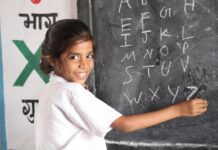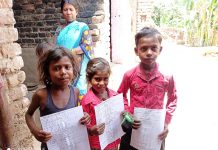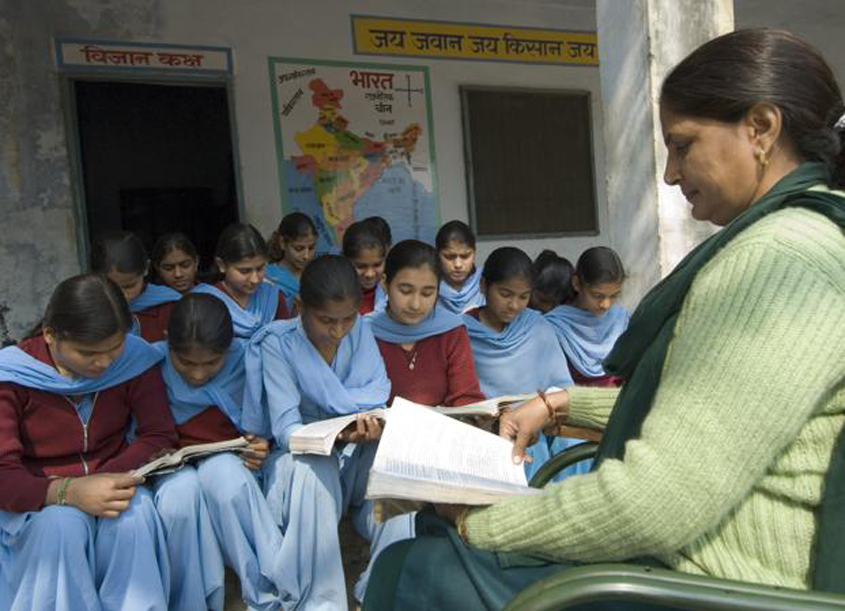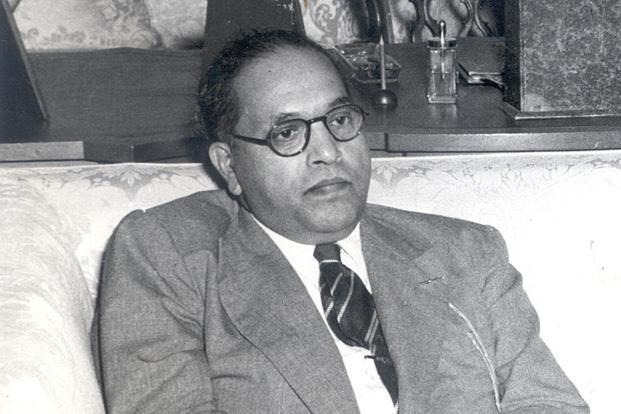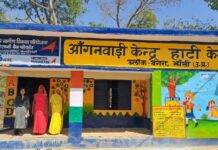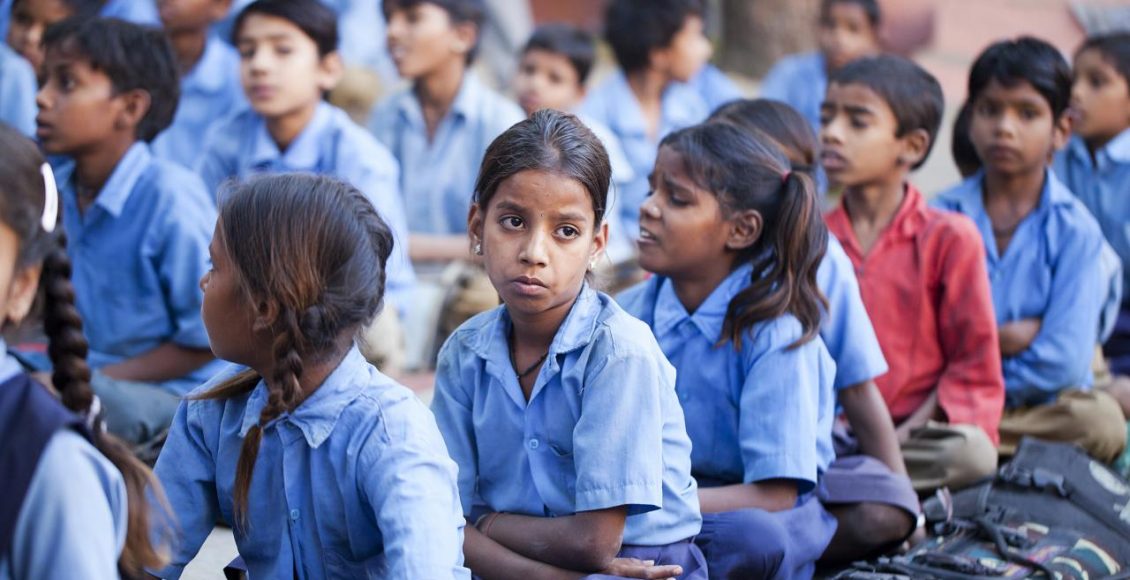The National Education Policy 2020 has special mention of four terms, “holistic”, “equity”, “equitable” and “inclusive” numerous times. These terms are very promising, but to make these terms meaningful and realistic, further promises are needed with very specific goals supported by concrete plan of action. Whereas debates are going on around the promises made by the policy document, I have a few pertinent questions as per my experience in the education domain.
Question on Assumptions on Medium of Instruction
I spent my childhood in a remote village where there were only government schools, the medium of instruction was Bengali – the regional language of that locality. English was taught as a subject; it was never a medium of instruction and Spoken English as a skill was also never emphasized too. A possible and most often placed argument is that children from marginalised social group have parents who are not able to provide any support in English medium, therefore for them, the medium of instruction must be preferably home language or mother tongue. Probably the same argument is placed now too. Look at the NEP 2020. While talking about “Multilingualism and the power of language” the NEP 2020 states this: “Wherever possible, the medium of instruction until at least Grade 5, but preferably till Grade 8 and beyond, will be the home language/mother tongue/local language/regional language. Thereafter, the home/local language shall continue to be taught as a language wherever possible. This will be followed by both public and private schools.”
Which places will be getting such schools with home language/mother tongue/local language/regional language as medium of instruction? First and foremost, the rural areas where a vicious cycle is going on for generations. The parents in rural areas normally don’t get the exposure to English medium; their status as “marginalized” (not necessarily socio-economically) has remained the same, the government has continued so far to offer English as a mere “subject” taught mostly for passing the grades. I was one such student despite being socio-economically privileged, just because of my father’s job there. I had to get education in a Bengali medium school and I have no issues with that, but the issue lies with the fact that there is a huge difference between English as a medium of instruction and English taught as a language in the schools especially in Indian rural schools. The school I was attending had English subject teacher who was teaching only higher classes (9th and 10th grade). Other teachers taking English classes in lower grades were mostly managing English as a subject with completely Bengali instructions and the subject was taught to introduce some English words, sentences and basic grammar which had no link with our real lives.
Throughout my school days I didn’t get a chance to internalise English as a language to speak in. After completion of my graduation, I discovered many students coming from the families associated with the-then political leaders, studied in English medium schools. Their family members, visibly associated with policy making ruling political party, promoted mother tongue as a medium of instruction for government through policies, with lots of “ifs” and “buts” to accommodate other provisions as per their own convenience. It’s the same trend now. I am sure that the policy makers never send their children to such schools, because they are not placed in any location identified by default as “marginalised”. I am skeptical about two words, “wherever possible” as stated in the first paragraph in this write up. That quoted part will make a difference, there will be private having “English medium” irrespective of locality whereas there will be government schools especially in rural areas having vernacular language as medium of instruction.
There are some interconnected factors which play a big role to create a space for private players in school “industry” across the country. The wrong assumptions seem to be purposive. It’s not true that all people in rural areas are marginalised, there are economically sound people even in rural areas who aspire for better education for their next generation and for that they prefer “English medium” schools. Here comes the role of private players in “school” industry which offers English medium education by charging fees and there will be no problem to give them permission to run a private school where teachers’ qualifications may remain questionable. Thus, the first layer of class-based distinction in terms of schooling process is created smartly. Instead of this, why couldn’t the government try to put more emphasis on English for its practical purpose, considering the reality of this present world? Isn’t it true that the skills like speaking and writing English are more suitable “21st century skills” rather than learning Sanskrit? What is more important at this point of time?
The Question of Competency for Higher Education
Once a child completes education with English as a subject till middle school (8th grade) and enters 9th grade, even getting a good teacher of English may not make much difference. Rarely a child can gain the confidence of speaking in English after passing 10th grade. Thus, majority of such children have extremely poor English proficiency. My struggle with English started when I entered my graduation with English medium instruction. Most of the books meant for higher education are written in English and in post-graduation degree, majority of the university courses in most prominent universities are offered in English only. The struggle was not for understanding, for gaining the competency in spoken English and expression in English fluently and confidently. Another struggle was to pick up the subject specific terminologies which were just strangers to me. I had overcome the barriers somehow, but majority of my batchmates and contemporary students lost the battle, they dropped out either after 12th or after graduation. I was the single person from that school who could get a higher education from a decent university, could complete a doctoral degree and could ensure a position in a university as teaching faculty. This entire journey could not be possible if I didn’t know enough English. Probably the policy makers need to take a stock regarding the number of students completing their school education with vernacular language as the medium of instruction till 10th grade or beyond, managing to get higher education and to compete for better livelihood opportunities. Forget about higher education, even to survive in many other states in a multi-lingual country like India, a basic understanding of English is necessary. Can we deny the fact that mere instructions on a medicine, prescriptions of standard hospitals are also written in English which must be read and understood by children studying in 5th or 6th grade as done by a typical urban English medium school going child?
I completed my schooling sometime in late 1980s, even after 3 more decades, nothing has changed substantially. Till now, when I go to the rural government schools, it has almost the same character. Students are getting subject teachers in higher classes; English is taught as a subject which is not adequately linked to their real lives. How will this new educational policy ensure that the medium of instruction will not keep the status of so called or taken for granted “marginalised communities” in the same position for next few decades too? Why can’t English be emphasized even in rural areas when English learning must be considered as a life skill or 21st century skill (as per the language used by NEP 2020)!
Question on Assumptions on PTR and Local Teachers
Look at point no. 2.5 where the policy states this “Attention will be given to employing local teachers or those with familiarity with local languages. A pupil-teacher ratio (PTR) of under 30:1 will be ensured at the level of each school; areas having large numbers of socio-economically disadvantaged students will aim for a PTR of under 25:1. Teachers will be trained, encouraged, and supported – with continuous professional development – to impart foundational literacy and numeracy.”
There are two promises: one is about PTR and another is about the local teachers. Let’s examine its possible implication. The first promise around PTR itself is a problematic factor, because PTR is counted as per total number of students which include students of all grades. Thus, in current state of education, numerous schools having 60 or less students get only 2 teachers as per 30:1 rule. What will happen to the subject teachers? Who will teach the specific subjects that need content knowledge especially while teaching the classes beyond primary? Sometimes, because of the low enrolment, schools are shut down or merged with another nearby school and such random decisions based on logistics consideration without thinking of transport facility required for the children to attend the school and that results into drastic dropout. Ironically, we keep on talking about “inclusion” in our policy documents.
The second promise about recruitment of local teachers looks like just an idealistic statement. There are numerous villages where colleges are located at a distant place and transport facility is so poor that it is extremely difficult to attend college education even if anyone is willing and eligible to complete it. How will the policy ensure local teachers without ensuring the scope of college education in nearby locality with adequate transport facility? There are several backward blocks having similar issues for which no promise has been made in this policy. I doubt if disadvantaged areas will get any extra facility even after implementation of this policy and rarely such areas get highlighted in media too.
The Question of Dropouts
Section no 3.4 states the following: “Once infrastructure and participation are in place, ensuring quality will be the key in retention of students, so that they (particularly, girls and students from other socio-economically disadvantaged groups) do not lose interest in attending school. This will require a system of incentives for deploying teachers with knowledge of the local language to areas with high dropout rates, as well as overhauling the curriculum to make it more engaging and useful.” It seems that there are assumptions regarding dropout with very limited understanding about the multiple causes of dropout. School infrastructure related commitments were made in Right to Education (RTE) Act 2009 and still it is just a theoretical promise for many schools.
There are three major areas which are never focused to address the dropout issue: (i) accessibility of schools (by means of transport communication), (ii) provision of support staff in schools for taking care of non-teaching tasks (mostly done by the students), (iii) ensuring teachers’ safety and security in schools located in rural (remote) areas. I am emphasising on these aspects again for the schools where children drop out because of their livelihood related issues (including household workload), social exclusion, lack of transport facility to schools, lack of social safety and security, availability of formal education up to just one level which does not lead to any aspiration. In such places, female teachers are rare because of again the lack of facilities. Where is the promise to address those issues? Why do the policy makers ignore the fact that most of high end government schools and private schools have their non-teaching staff who take care of many aspects of day to day school activities that include taking care of younger children and maintaining health and hygiene? There are alternate schools where non-teaching tasks are done by the students, but we must remember that majority of those students belong to different class, they rarely do such works at home, for them, it’s a new thing to enjoy! Imagine a girl child taking care of all household chores throughout the day at home, doing the same or similar tasks at schools too, how will she feel? Will she enjoy school? During my school visits, many girls in the rural schools have spoken about this issue as they are forced to do such tasks in schools because of their gender. The girls belonging to lower castes are forced to work in schools in most places, isn’t that known to the policy makers? Section 5.12 states that “To prevent the large amounts of time spent currently by teachers on non-teaching activities, teachers will not be engaged any longer in work that is not directly related to teaching; in particular, teachers will not be involved in strenuous administrative tasks and more than a rationalized minimum time for mid-day meal related work, so that they may fully concentrate on their teaching-learning duties”, but it doesn’t state how and since when. Providing residential facilities will not suffice because education can’t be made as a “compulsion” by force, it should be enjoyable to the children too with both adequate material, human resources and continuous support!
Questions Around “Holistic” and “Inclusive”
With all these three vague promises to promote “holistic” and “inclusive” education, which are repeatedly mentioned in the policy document, the document further states this in section no. 4.45: “Olympiads and competitions in various subjects will be conducted across the country, with clear coordination and progression from school to local to state to national levels, to ensure that all students may participate at all levels for which they qualify. Efforts will be made to make these available in rural areas and in regional languages to ensure widespread participation. Public and private universities, including premier institutions like the IITs and NITs, would be encouraged to use merit-based results from National, and International Olympiads, and results from other relevant national programmes, as part of the criteria for admissions into their undergraduate programmes.” How to read the quoted statement? The efforts will be made to make competitive examinations available in regional language to ensure widespread participation, and of course this participation will generate income for the organisers of the Olympiads and competitions in various subjects as per the current trends. It has no promise to students for their entry to higher education in premier institutions like the IITs and NITs (as described in the policy). There the entry will be determined by “merit-based results from National, and International Olympiads, and results from other relevant national programmes” and what will be the medium of those examinations? Of course, those can’t be in regional language! Will it guarantee any “inclusive education”? Are we not hiding some facts very smartly again? I can foresee few more generations to struggle to make their pathway to higher education from a rural background as I had to do three decades back!
The Question of Adult Education
It was nice to see that adult education was thought of again elaborately in the draft education policy with a special emphasis as elaborated in chapter 21 of the draft document which has been diluted into 2 pages in the final document! While the draft document talked about overall plan, implementation and fund allocation for the programme which was found to be quite structured, the final version doesn’t have that part at all!
Adult education is not an isolated entity, it is absolutely required as a pre-requisite of school education to ensure that the adult members of the families provide support to children’s education. We must keep in mind the following facts which clearly indicate the inter-linkages between adult education and school education:
- education is a choice of parents,
- parental choices of education for children depend on the family’s background especially socio-economic and cultural background,
- local context matters a lot in children’s education and
- a child’s continuity in schooling and span of schooling depend on parents’ decision to a great extent.
Therefore, adult education must be continuously emphasised in our country while dealing with school education. Since independence, adult education has remained a most ignored space in education policies despite its visible impact during National Literacy Mission. Section 21.3 states the following: “Extensive field studies and analyses, both in India and across the world, clearly demonstrate that volunteerism and community involvement and mobilization are key success factors of adult literacy programmes, in conjunction with political will, organizational structure, proper planning, adequate financial support, and high-quality capacity building of educators and volunteers. Successful literacy programmes result not only in the growth of literacy among adults, but also result in increased demand for education for all children in the community, as well as greater community contribution to positive social change.” In a country like India, where people have lack of livelihood opportunities, the policy makers are expecting that volunteerism will help to take the initiative forward! It is more surprising that during this pandemic situation, when this policy document was released, there was no emphasis on adult education (not mere literacy) without concrete plans while the entire country needs to figure out how to deal with the economic and social crisis to be experienced for next few years!
“Many a Slip between the Cup and the Lip”
At this point of time, the policy document reminds me a proverb “There is many a slip between the cup and the lip”. The National Education Policy of 1968 was just a “watered down” version of Kothari Commission’s Report, the statements were mostly idealistic. Similarly, NPE 2020 also seems to be not concrete in many ways, not being able to make us very optimistic about the massive improvement of school education in those areas where improvement is awaited since the Independence. I would love to see that “internet-connected smart phones or tablets are available in all homes and/or schools” as mentioned in 4.46 of the policy document. Before that, we need to ensure that we highlight the grade wise attainment instead of enrolment, concentrate on “holistic” development in its real sense instead of only better score in Olympiad type competitive examinations, truly “equitable” distribution and accessibility of higher education opportunities in all areas including the chronic underdeveloped areas, more transparency and “equity” in financial allocation to each school for the continuous development and “inclusion” of all in its true sense. Without a proper plan of action with specific mention about plans, timeframe and accountability framework, the dreams will not come true at all.
We have just 10 years to reach 2030. Instead of looking only at “the global education development agenda reflected in the Goal 4 (SDG4) of the 2030 Agenda”, let’s start thinking globally, but planning and acting locally in a step by step process. Education is in concurrent list, the states must prioritise where to start, keeping the target to pull in chronically deprived areas substantially. The promises made in this policy document should not be further diluted into a messy and confusing situation given the time frame and façade already created through some unclear and idealistic terminologies. Four specific lines of the policy document on page no 4 are extremely important and promise a lot: “Education Policy lays particular emphasis on the development of the creative potential of each individual. It is based on the principle that education must develop not only cognitive capacities – both the ‘foundational capacities ’of literacy and numeracy and ‘higher-order’ cognitive capacities, such as critical thinking and problem solving – but also social, ethical, and emotional capacities and dispositions”.
Saswati Paik teaches at the School of Education, Azim Premji University, Bengaluru.


